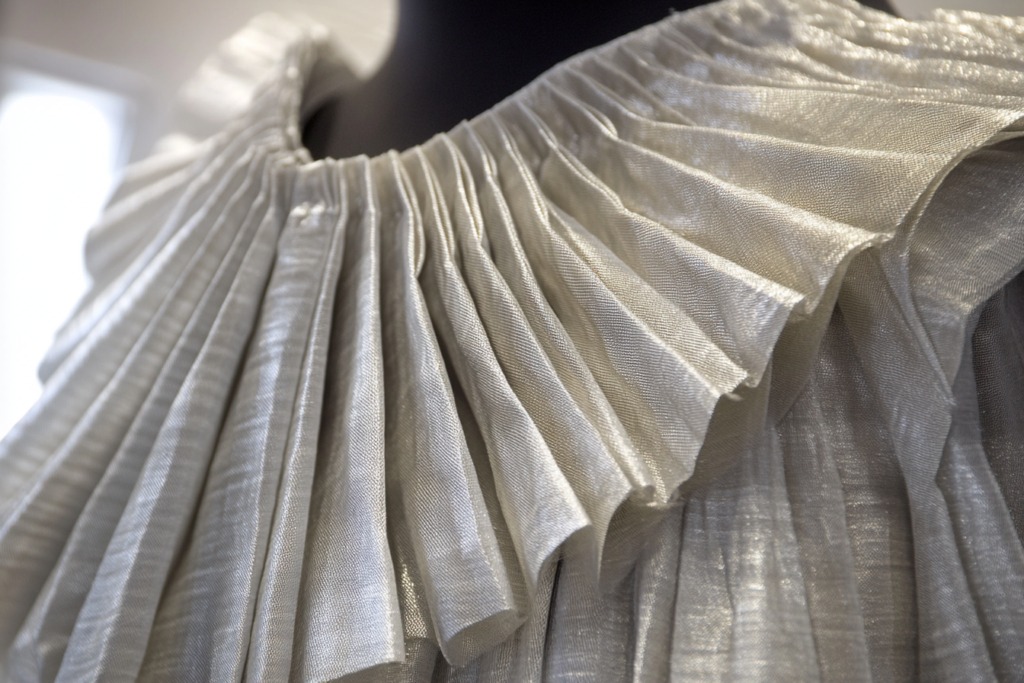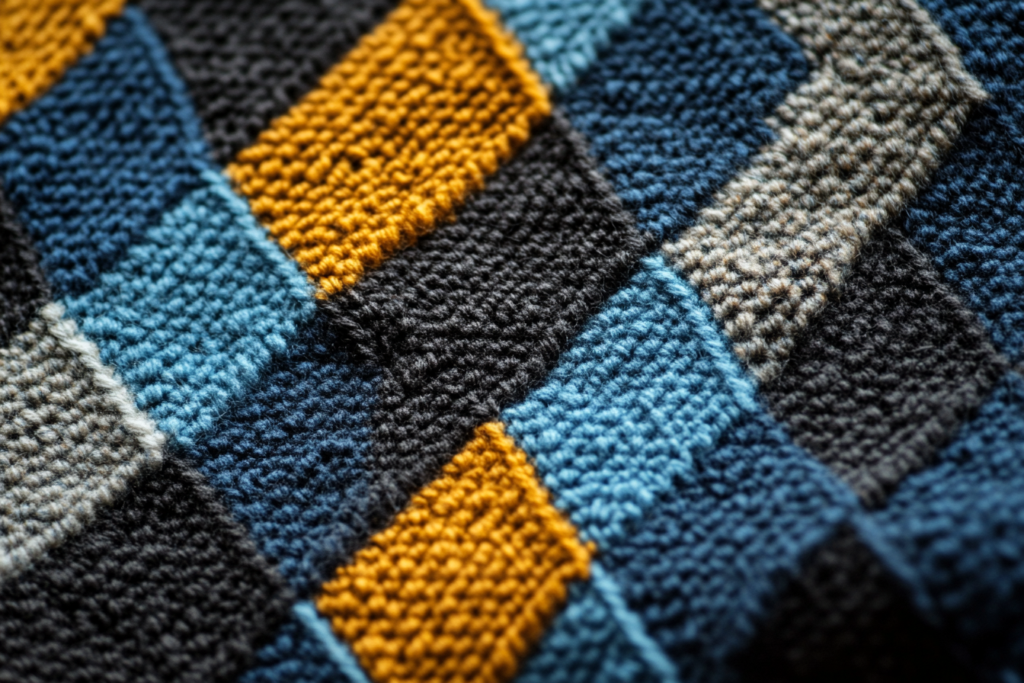Tucks: The Art of Creating Shape and Structure in Garments
Meta Description: Tucks, also called darts, are parallel folds of fabric used to handle large amounts of loose fabric. Learn how tucks add shape and structure to garments, from casual wear to formal designs.
What are Tucks?
Tucks, also referred to as darts, are a technique used in garment construction to create shape and structure. A tuck is formed by sewing parallel folds of fabric together, typically along a seam line. The fabric is stretched to fit into the folds, and the pleats are evenly distributed, providing a smooth, contoured look.
Tucks are particularly useful when handling larger amounts of loose fabric that need to be brought in or shaped to fit the body. This technique is commonly used in skirts, blouses, and dresses to give the garment a fitted shape while allowing the fabric to move comfortably.
Key Features of Tucks
✔ Parallel Folds: Tucks are made by folding the fabric in parallel lines, which are then stitched to hold them in place.
✔ Shape and Structure: This technique helps to create a contoured fit, reducing the bulk in areas where the fabric needs to be shaped.
✔ Even Distribution of Pleats: The folds in the fabric are evenly distributed, allowing the fabric to be gathered without creating excess bulk.
✔ Suitable for Loose Fabrics: Tucks are typically used on garments made from loose or flowy fabrics that need a bit more structure.
✔ Versatility: Can be used in formal or casual garments depending on the size and frequency of the tucks.
Why Use Tucks in Garment Construction?
1. Creating Shape
Tucks are an excellent way to add shape to garments without introducing visible seams. They allow the designer to contour the fabric to fit the body, especially around the waist, bust, and hips.
2. Handling Excess Fabric
When working with fabrics that are too loose or have extra volume, tucks help gather the fabric in a controlled way. This is particularly useful in garments like skirts, blouses, and dresses where you want the fabric to be both flowy and fitted.
3. Aesthetic Appeal
Tucks can also be a decorative element in a garment. When arranged in a pattern or repeated throughout a piece, they can add a subtle texture or design feature that enhances the overall look of the garment.
4. Versatility
Tucks can be used in both formal and casual wear. In formal wear, they can help shape a dress or blouse elegantly, while in casual wear, they can provide comfort and a structured silhouette.
How to Make Tucks
Creating tucks involves folding the fabric and securing it with stitching. Here’s how you can make tucks:
Step 1: Mark the Fabric
- Start by marking the places where you want the tucks to be. You can use a fabric chalk or a fabric marking pen to outline the fold lines.
- Typically, the width of each tuck will be consistent, but you can vary it for different design effects.
Step 2: Fold the Fabric
- Fold the fabric along the marked lines. The folds should be even and parallel to each other.
- Press the folds flat to ensure they are neat and uniform.
Step 3: Pin the Folds
- Pin the fabric in place, making sure that the folds do not shift as you sew.
Step 4: Sew the Tucks
- Using a sewing machine, sew along the edge of each fold to secure it. The stitches should be invisible or subtle, depending on the garment design.
- Ensure that the stitching is straight and aligned with the fold for a clean finish.
Step 5: Press the Tucks
- Once the tucks are sewn, press them carefully with an iron to set the folds and give them a crisp, defined look.
Types of Tucks
Tucks come in various forms depending on how they are sewn and the effect you want to achieve:
1. Double Tucks
- In double tucks, two folds are made in opposite directions and then sewn together. This technique can create a deep, textured effect.
2. Pin Tucks
- Pin tucks are smaller, finer tucks often used in delicate fabrics such as silk or chiffon. They provide a subtle texture to the garment.
3. Decorative Tucks
- These are tucks used primarily for decorative purposes. They can be arranged in various patterns, such as parallel lines or diagonal patterns, to create a visual design element.
4. Blind Tucks
- Blind tucks are sewn in a way that the stitching is hidden on the inside of the garment, giving a clean, seamless look on the outside.
5. False Tucks
- A false tuck mimics the appearance of a tuck but is simply a decorative fold without actually stitching the fabric together.
Applications of Tucks
Tucks are used in various garments, adding structure and style in different ways:
📌 Blouses and Shirts
- Tucks are commonly used in blouses and shirts to add shape to the garment. They can be placed at the bust, waist, or shoulders for a more fitted silhouette.
📌 Skirts and Dresses
- Tucks can be used in skirts and dresses to add fullness or to taper the garment to the body. They’re perfect for creating soft, flowing effects in the fabric.
📌 Home Decor
- Tucks are also used in home decor items like tablecloths, curtains, and pillows to create texture and interest.
Tuck vs. Darts: Understanding the Difference
While tucks and darts both involve folding fabric to create shape, they differ in the way they are applied:
| Feature | Tucks | Darts |
|---|---|---|
| Fabric Fold | Parallel folds of fabric | Triangular fold |
| Purpose | To gather fabric and create shape | To create volume reduction and shape |
| Position | Often placed at waist, bust, or hips | Typically at the bust, waist, or back |
| Effect | Adds texture and shape | Provides a more structured, fitted look |
Illustration of Tucks
Below is an illustration showing how tucks are sewn into fabric, creating parallel folds to add shape and texture to the garment.

Conclusion: The Functionality and Style of Tucks
Tucks are a versatile and practical technique in garment construction. They are essential for shaping and adding structure to garments, especially in loose or flowy fabrics. Whether used for functional purposes or decorative designs, tucks provide both durability and style.
Incorporating tucks into your garment designs will allow you to create fitted, tailored looks with a unique textured finish, making them a must-know technique for any designer or seamstress.



